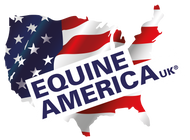Wound Care

When it comes to horses’ wounds, scratches and abrasions are unfortunately extremely common and every horse owner should be aware of how to deal with them.
The most common wounds occur on horse's limbs and are caused by foreign objects such as fences, gates, farm implements and building materials. If the wound looks simple and you are confident that it doesn’t overlie an important structure and the horse is not lame, you can manage the wound yourself.
How do I help healing my horses wound?
Derma GeL® is a great product and provides a moist environment which maintains epithelial cell viability to 97% and enables healing epithelial cells to migrate across the wound bed, multiply exponentially and enhance wound healing - increasing wound contraction speed.
The moist environment provided by Derma GeL® does not permit the formation of a scab. These properties promote wound healing from the sides as well as the bottom of the wound.
A wound without moisture will form a scab. In order to heal, the epithelial cells have to migrate below the scab to reach moisture that enables them to heal the wound. Epithelial cells that have to migrate longer distances do not survive well, and this delay wound healing.
We advise using Derma Gel, to start wash the area thoroughly with water or saline solution only, so as to preserve epithelial cells from irritation. Then generously apply Derma Gel two or three times a day, as needed. To help prevent skin proliferation, extend application to the surrounding area.
Will my horse get an infection?
All wounds are contaminated with microorganisms. The difference between a contaminated wound and an infected wound is the concentration of microorganisms present in the wound. Proper cleansing and care of the wound will prevent the number of microorganisms from increasing to the point of infection. It is recommended that the wound be flushed generously with saline solution or warm water. The use of topical antibiotics is not recommended with Derma GeL®. The protective layer and bacteriostatic properties provided by Derma GeL® enable the wound to heal without bandaging while controlling bacterial proliferation.
Do I need to bandage my horse?
The conventional method of wound treatment involved applying gauze and wraps which were thought to protect the wound and speed up healing. Wounds covered with a hydrogel dressing are kept moist without the need for bandaging. Therefore, the skin heals faster, without the trauma of bandage removal and replacement.
When Derma GeL® is applied, it provides an external layer of protective film. This external layer is semi-occlusive and enables the inner layer to maintain a moist environment. The moist environment is composed of hydrophilic particles and several active molecules, which absorb exudates from the wound. The combination of the protective film and the ability to absorb wound exudate creates an optimal moist environment for rapid healing.
Will the hair grow back?
The use of Derma GeL® with proper wound cleansing minimizes micro bacterial concerns that the microorganism population will not increase to infection levels, and that exudates are absorbed from the wound, providing a moist environment in which the healing epithelial cells can work to heal the wound. When keeping the wound cleansed and moist, the epithelial cells produced are identical to those prior to the damage. Derma GeL® does not contain any mutagenic agents, which induce the formation of excessive tissue granulation and discoloured hair on regrowth.
Whilst many wounds are small and require little more than cleaning and monitoring closely, some inconspicuous looking wounds can have far more serious consequences than might first appear. Call your veterinarian immediately if the wound is very deep or is a puncture, looks too large for the sides of the wound to touch (and will probably need stitches), or it is near a tendon, ligament, or joint.
 Skip to content
Skip to content

